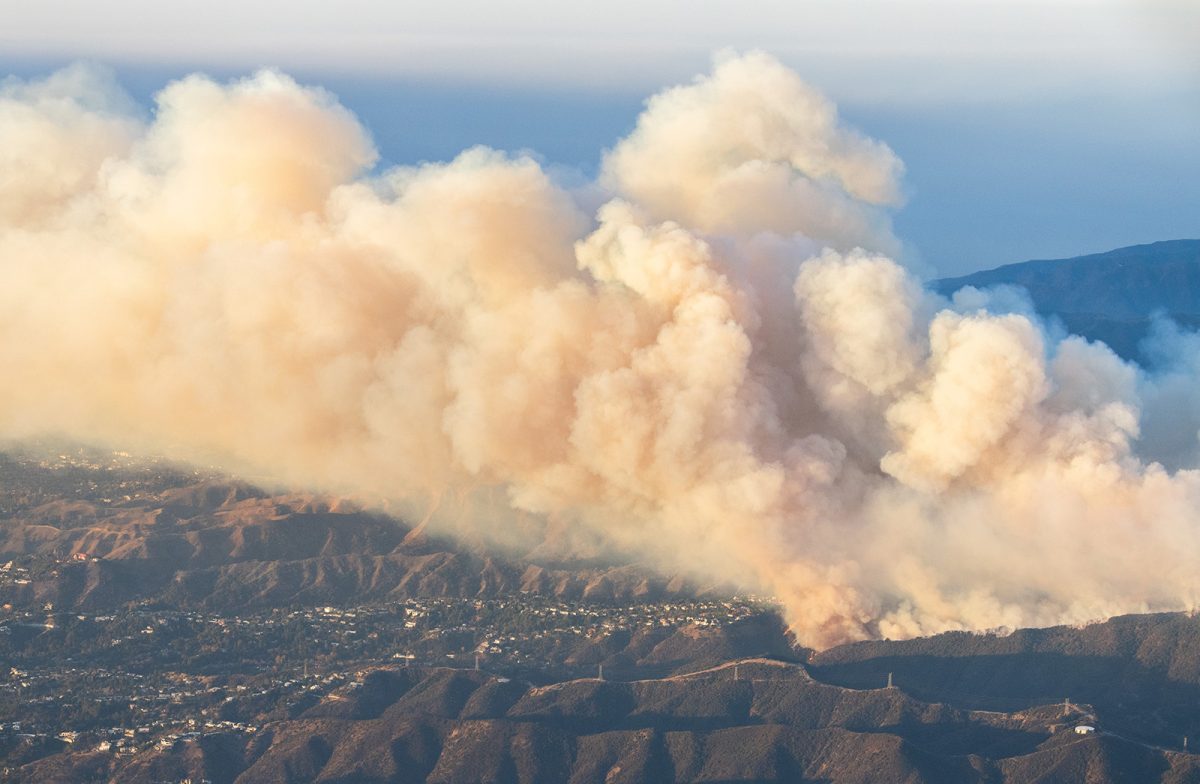Sophomore Rylee Scott sees post after post on her Instagram feed about the Los Angeles wildfires, remembering the stories her grandma told her about the Oakland wildfires from 1991. Scott has heard stories of people losing their homes and possessions, similar to what is happening now, but she worries for the people in Southern California, knowing that these current fires are much worse.
Currently the LA wildfires are made up of 331 fires, have burned 57,635 acres, destroyed over 16,000 structures and caused 29 fatalities. So far, they have contained the Hughes, Palisades, Eaton and Border 2 fires, four of the five major fires.
These fires are some of the worst that California has ever seen, the second most destructive wildfires in the state.
The LA wildfires began with the Palisades fire on Jan. 7, which started in the Santa Monica Mountains, but has now swept all the way through the Pacific Palisades, destroying over 20,000 acres of land.
The Palisades, Hughes, Border 2, Eaton and Laguna fires have all spread rapidly over Southern California, and have been difficult to put out, leading to mandatory evacuations and road closures throughout the area.
Families around the country are worried for the people they know in California, including those around McHenry.
“My aunt’s line of work was unavailable for a few days due to the fire,” sophomore Andrew Costello says. “My little nephew was out of school, and a lot of places were closed.”
Costello added that the environment and climate change are most to blame for the danger of the LA wildfires.
California should have seen their normal winter rain by now, but they have only seen one significant rain since last May.
This drought has pulled a majority of the moisture from all of the air, soil and vegetation, which makes fire extremely easy to catch and spread.
“Once the live fuel moisture hits around 60%,” UC Merced’s Abatzoglou said to CalMatters, “that is the critical danger zone.”
He explained that at this level, the plants and vegetation aren’t able to resist catching fire, which makes the wind a risky factor. These conditions combined allow fire to catch at even a slight ignition.
Southern California got their first significant rainfall in eight months on Jan. 26, with most of the heavy rainfall missing them and landing over the ocean. The rainfall temporarily helped slow the spread of the fires, but also caused mudslides and back flush because the dry soil isn’t able to absorb the water.
The area is projected to get even heavier rainfall in the coming week, which could put an end to the rest of the current wildfires, but is also likely to cause heavy flooding from dry vegetation.
As the wildfires near their end, affected families wonder how they will rebuild.
“If you know anybody on the West Coast or not,” Jamie Lee Curtis told The Tonight Show, “the American Red Cross – support them. They will come in and help people. Do anything you can, anything in your community to help people.”
Celebrities like Curtis, have been advocating for the importance of donating to help those in California. One way they have raised money was through a FireAid benefit concert last Friday. They raised over $60 million through the performances of popular artists such as Green Day, Gracie Abrams and Lady Gaga.
There is a lot of work that will need to be done, and insurers are estimated to pay around $30 billion in house insurance claims. Because of the number of claims that will be filed, it could take up to a year to resolve them all.
To combat this California Insurance Commissioner, Ricardo Lara, has issued that all insurance companies must “provide advance payments on claims to speed recovery for wildfire survivors”, according to the California Department of Insurance.
Although the wildfires are almost all contained, the fight to bring Southern California back to what it was is far from over. It will take months to restore the over 40,000 acres that were destroyed.
“It’s the most terrible thing to have your house in ashes and to lose everything,” Scott said. “My family knows a lot of people that happened to. If you can, do anything to help, and definitely stay environmentally aware.”
Scott reposts pictures of Southern California, along with links to donate for rebuilding. She hopes to spread the word and get more people to help, so those in California can return to their normal lives as quickly as possible.




